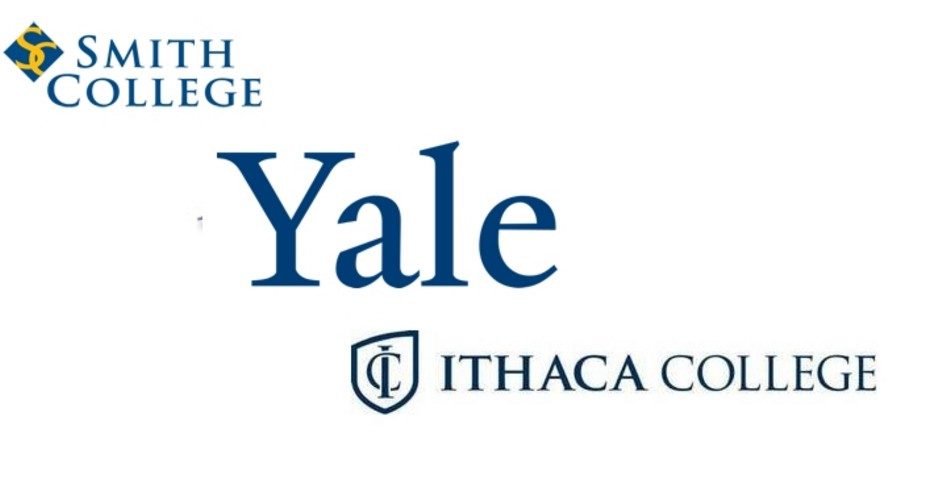
With the forced resignation of University of Missouri President Tim Wolfe last Monday over alleged racial incidents at the school, radicals on other campuses are now being emboldened to air their own racial grievances.
So far, demonstrations are either planned or have already happened at several other colleges, such as Yale University, Ithaca College, and Smith College — all in the northeastern part of the country.
In upstate New York, a student group calling itself People of Color at Ithaca College held a Solidarity Walk Out on Wednesday for “all the injustices students of color face on this campus and other colleges nationally.”
Protesters at Ithaca have targeted their own school’s president, Tom Rochon, for removal from office, claiming, as did the Missouri protesters of their president, that he has been too lenient in the handling of certain racial incidents on campus. The group declared, “With University of Missouri’s president stepping down, we demand Rochon do the same as it is vital to fight against both covert and overt racism in all places of education and empowerment.”
Events at Ithaca College show how little it takes to get one on the firing line. Online news source Policy.Mic reported the words of Dominick Recckio, the president of the Student Government Association:
The first source of tension involves encounters between students and public safety officers. Following a training session with public safety officers early in the semester, a number of resident assistants claimed the officers were “racially insensitive,” “aggressive” and “invalidating,” according to the Ithacan, the student newspaper. One officer, holding a BB gun, reportedly remarked, “If I saw someone with this I would shoot them.” Recckio says he believes the language was inappropriate, in light of the death of Tamir Rice, the 12-year-old boy killed in 2014 by Cleveland police while wielding a BB gun.
Rochon is also apparently in trouble for not somehow chastizing or sufficiently rebuking an alumnus and investor who used a nickname for a colored alumnus that she didn’t like and for not punishing a fraternity, which is not officially affiliated with the university, that held a dress-up party that asked attendees to dress “’90s thuggish style … a bandana, baggy sweats and a T-shirt, snapback and any ‘bling’ you can find!”
Though at least for the initial two incidents Rochon apologized to those offended, looked into getting body cameras for the campus police, and offered to start a community review board, that wasn’t good enough — the students were still deeply offended.
Smith College, a women’s private school in Massachusetts, was the site of yet another walkout by students, called to show their solidarity with the demonstrators at Missouri and Ithaca, and “for all the injustices students of color face on this campus and other colleges nationwide.”
At Missouri, where the first of these racially charged demonstrations began, some professors walked out of class even after university President Wolfe had resigned. Elisa Glick, a professor of Women’s and Gender Studies at Missouri, sent an e-mail to Reuters announcing her support of “the students who are still camping out and fighting for racial justice on campus.”
Other schools are moving to please campus radicals even before demonstrations occur. University of Michigan President Mark Schlissel announced a school-wide session on Tuesday to discuss diversity on campus.
Payton Head, the black president of the student body at Missouri, launched the unrest at the state-supported institution located in Columbia, when he claimed back in September that several people in a pickup truck had yelled racial slurs at him as they drove by.
Other similar incidents were also alleged to have occurred at Missouri, and a group calling itself Concerned Student 1950 (the year the first black students were admitted at Missouri) insisted on the resignation of the university president because they felt he was not doing enough to end these incidents.
But these were not the only demands of Concerned Student 1950. The Columbia Daily Tribune published its requirements, of which the ouster of President Wolfe was only one among many. The group also insisted that Wolfe “acknowledge his white male privilege,” and “recognize” that systems of oppression exist. It also called for the next college president and chancellor to be selected by a “collective” of students, staff, and faculty of “diverse” backgrounds.
Another demand of the group, cited in the Daily Tribune, was that a “comprehensive racial awareness and inclusion curriculum” be created that would be “mandatory for all students, faculty, staff, and administration.” To insure that the curriculum would be to their liking, they further insisted that it be “vetted, maintained, and overseen by a board comprised of students, staff, and faculty of color.”
No white person need apply.
The group included demands to hire more staff, “particularly those of color,” to promote “diversity” on campus.
Since the student body president, Payton Head, is generally credited — or blamed — depending on one’s perspective, for the unrest on the Missouri campus, some have expressed curiosity about his background.
Head came to Missouri from Chicago, where he worked on behalf of Mayor Rahm Emanuel, a former chief of staff for President Barack Obama. In his third year at Missouri, Head still has not declared a major. He has spent time in Columbia and elsewhere, involved in “Social Justice” seminars that focus on gender inequities, racial discrimination, same-sex relationships (Head is a homosexual himself), and other deviant sexual activities.
He caused a major stir on the Missouri campus with a Facebook post Tuesday claiming that the Ku Klux Klan was active there. Though he apologized several hours later, saying he was mistaken, his action led to calls for his own resignation as student body president.
Curiously, while blacks make up only seven percent of the student population at the University of Missouri, they comprise 100 percent of the student government.
The efforts of Head and the Concerned Student 1950 group were making little impact until black members of the Missouri football team — a mediocre squad with a 4-5 record — added their voice to the protest, pledging to neither practice nor play until President Wolfe was gone.
It is highly unlikely that this genie will return to the bottle. Other college students and athletes may also be tempted to “go on strike” to force changes at their colleges — perhaps fire all conservative professors, or target professors who are considered too tough in their grading — and where this will end is uncertain. Such actions could potentially lead to football team disunity, even the destruction of some universities’ football programs, as well as other negative consequences.
Meanwhile, fans may just decide to go on their own strike and stop buying tickets to the games — which are certainly not cheap. Those in Columbia might find something on television to watch on Saturdays instead of mediocre Mizzou players engaged in leftist political activism.
And taxpayers may cut spending on these public institutions, with donors giving their money to other causes not militantly leftist.
Steve Byas is a professor of history and government at Hillsdale Free Will Baptist College in Moore, Oklahoma. His new book, History’s Greatest Libels, is a challenge to some of the great lies of history.



